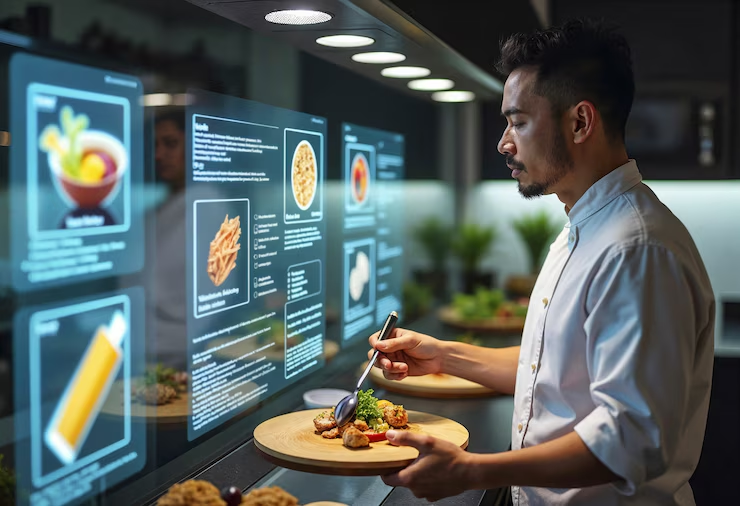Introduction
In today’s digital landscape, video marketing has become one of the most effective ways to engage audiences and drive conversion rates. As consumers move increasingly toward video content over traditional static text, companies that leverage the power of creative Video content marketing see greater participation, better brand recall, and, most importantly, increased revenues. Whether through short-form social clips or long-form product demos, video offers an emotionally engaging way to reach audiences. As part of comprehensive Digital marketing services in uk, creative video content has proven to be a powerful asset for businesses aiming to forge stronger connections with their audience. But the question remains How do you drive conversions through creative video marketing effectively? In this definitive guide, we’ll explore tested methods, cutting-edge techniques, and creative best practices to turn your video content into a conversion powerhouse

Also Read – Video Advertisement – Tips & Tricks
Why Video Marketing is Necessary for Conversions
The Power of Visual Storytelling
People comprehend visuals 60,000 times faster than text, making video a format that’s naturally engaging. Videos bring together the power of images, audio, and emotion, weaving together great stories that move people more intensely than static communications. That connection encourages viewers to recall your message and take action.
Higher Engagement Rates
- Social videos receive 1,200% more shares than image and text posts combined (WordStream).
- Adding a video to a landing page can increase conversions by as much as 80% (Unbounce).
Video content captures attention immediately and retains it longer, making it more likely to convert viewers into customers.
Builds Trust and Credibility
Videos give your brand a face and voice, making it more relatable and trustworthy. Customer testimonials, behind-the-scenes clips, and live Q&As humanize your business and help build strong relationships with your audience key factors in gaining customer trust and loyalty.
Boosts SEO and Organic Reach
Google prefers video content in its search results. Sites that contain videos are 53 times more likely to be on the first page of Google search results (Insivia). Video also drives the time people spend on your site, which enhances engagement metrics and enhances your SEO performance.
Types of Video Content That Drive Conversions
Explainer Videos
These are brief, compelling videos that easily explain what your service or product does and why it’s important. They’re particularly useful for breaking down complicated offerings. A perfect example is Dropbox’s first explainer video, which increased their conversions by 10% equating to $48 million in added revenue. Clear, concise, and visually compelling, explainer videos are most often the initial step in nudging a prospect forward through the funnel.
Product Demos
Showing how your product operates in real time erases doubts and reaffirms value. By exposing vital features and use cases, product demo videos provide potential buyers with clarity and confidence for taking the next step.
Customer Testimonials & Case Studies
Nothing establishes trust like authentic customer success stories. Videos featuring testimonial clips from happy customers who share their experience are effective social proof. Moreover, 92% of shoppers believe in the word of fellow consumers over online advertising (Nielsen), and thus, testimonial and case study videos rank among the most powerful formats to drive conversions.
Live Videos & Webinars
Live content produces an immediacy and authenticity that’s difficult to match. Whether you’re introducing a product, providing a live Q&A, or presenting a webinar, real-time interaction builds trust and increases higher engagement. The additional benefit of answering questions live eliminates objections and pushes viewers towards conversion.
Animated Videos
For companies that work with conceptual ideas or technological goods, animated videos are the best means of making content more palatable and engaging. With bright graphics and easy narratives, animation simplifies difficult-to-convey ideas and helps them stick.
User-Generated Content (UGC)
Videos produced by your customers whether reviews, unboxings, or how to’s are hugely effective. UGC provides authenticity, a sense of community, and inspires trust. By highlighting real people using and loving your product, you make your brand human and more relatable, which can powerfully sway purchase decisions.
How to Create High-Converting Videos
Define Your Goal
Begin with a definite goal. Are you trying to drive sales of your products, build your email list, or drive general brand awareness? Having a clear goal in mind will help dictate your messaging and decide what kind of video you need to make.
Know Your Audience
Know your audience. Create in-depth buyer personas to understand their needs, pain points, and interests. The more you personalize your content to their pain points and interests, the higher the chances of engagement and conversion.
Write a Compelling Script
Your script is the foundation of your video.
- Capture attention in the first 5 seconds with a question, strong statement, or striking visual.
- Make the message direct and to the point particularly for ads, which perform optimally when shorter than 2 minutes. Each second must offer value and push the viewer further toward your CTA.
Production Quality Counts
- Employ proper lighting, good audio, and refined editing to show professionalism and establish trust with your viewers.
- Software such as Canva, Adobe Premiere Pro, and InVideo can ensure professional videos regardless of limited funding.
Add a Compelling Call-to-Action (CTA)
- Utilize plain, action-driven CTAs such as “Buy Now,” “Sign Up,” or “Learn More.”
- On digital platforms, add clickable features such as YouTube description links or swipe-up options in Instagram Stories to simplify conversions.

Maximizing Videos for Highest Conversions
SEO Optimization
- Incorporate related keywords into your video titles, descriptions, and tags to increase visibility on YouTube and Google.
- Include subtitles and closed captions—not just for better accessibility, but also to make search engines index your content more efficiently.
Thumbnail Optimization
Your video thumbnail is a first impression don’t waste it.
- Employ high-contrast images, clear branding, and bold text overlays to stand out.
- A great thumbnail can significantly boost click-through rates and generate more views that result in conversions.
A/B Testing
- Experiment with multiple versions of your video, testing out different intros, CTAs, or formats to determine what works best for your audience.
- Utilize data from platforms such as YouTube Analytics or Facebook Ads Manager to compare and contrast results and optimize your strategy.
Embedding Videos on Landing Pages
- Video pages have been reported to boost conversions by as much as 80% (Unbounce).
- Videos also make it easier to explain your offer, get more time spent on the page, and steer visitors toward your call-to-action.
Measuring Video content marketing Success
In order to see how well your video content is performing, it’s crucial to monitor the correct key performance indicators (KPIs). These measurements enable you to determine whether your videos are working effectively to engage your audience and drive conversions.
Key Metrics to Monitor:
- View Count: Shows the number of individuals who have viewed your video. It’s a simple but useful measurement for determining reach and visibility.
- Engagement Rate: Tracks how the viewers are engaging with your content (likes, comments, shares). High engagement indicates that your video is connecting with the audience.
- Click-Through Rate (CTR): Indicates the percentage of viewers who have clicked on your call-to-action (CTA). This measures how well your video is driving interest.
- Conversion Rate: Most important metric: the number of viewers who took the intended action after viewing (e.g., made a purchase, subscribed, or completed a form).
Recommended Tools:
- Google Analytics: Measure website behavior and conversions from video traffic.
- YouTube Analytics: Provides insights on watch time, traffic sources, audience retention, and more.
- Facebook Insights: Track video performance on Facebook, including engagement and audience information.
Case Studies: Brands That Nailed Video Marketing
Blendtec’s “Will It Blend?”
Blendtec upended their marketing approach with their now-famous “Will It Blend?” campaign, which used the company’s powerful blenders to blend various items, ranging from iPhones to marbles.
- The viral product demonstration videos generated a whopping 700% spike in sales.
- By using humor, creativity, and a surprise twist, Blendtec was able to grab the audience’s attention in a manner that transformed a straightforward product demonstration into an unforgettable marketing sensation.
Dollar Shave Club’s Launch Video
Dollar Shave Club’s launch video is a masterclass in how humor and relatability can cut through the noise.
- The brand picked up 12,000 customers within 48 hours of posting their cheeky, low-budget ad that spoke to everyday consumers.
- The plain, humorous, and pleasantly unpolished tone was perfect, and it’s one of the most successful viral ads in recent history.
Common Video content marketing Mistakes to Avoid
- Too Long or Boring: Keep it engaging.
- No Clear CTA: Tell viewers what to do next.
- Ignoring Mobile Users: 90% of videos are watched on mobile.
- Poor Audio Quality: Bad sound = lost viewers.
Future Trends in Video content marketing
- Short-Form Video Dominance (TikTok, Reels, YouTube Shorts).
- Interactive Videos (Shoppable videos, polls).
- AI-Generated Videos (Personalized content at scale).
- 360° & VR Videos (Immersive experiences).

Also Read – 7 Ways to Use Video to Drive Traffic and Conversions
Frequently ask Questions
1. How long should my marketing video be?
For most platforms, aim for 60 to 90 seconds. Focus on delivering your message quickly and concisely, as attention spans are short. For more detailed content, up to 3 minutes is acceptable.
2. Do I need professional equipment to create effective videos?
Not necessarily. You can create high-converting videos with a smartphone, good lighting, and clear audio. The key is having strong storytelling and clear messaging, not the cost of equipment.
3. What are the best platforms for Video content marketing?
It depends on your audience. For general reach, YouTube is great for long-form content. For quick engagement, Instagram Reels and TikTok work well for shorter videos.
4. How can I track my Video content marketing success?
Monitor view counts, engagement rates (likes, shares, comments), and click-through rates (CTR). Most importantly, track conversion rates to measure the direct impact on sales or leads.
Conclusion
In the fast-paced digital age of today, Video content marketing has become a necessity, not a luxury. It’s not a fad; it’s a conversion-driving, business-building tool. Strategically deployed, video content can engage, captivate, and persuade audiences in a way no other medium can, converting passive viewers into active buyers and creating long-term brand loyalty. A digital marketing agency in the UK can help you harness this potential by producing high-quality, engaging videos that directly address the needs and desires of your target market and distributing them strategically on the appropriate platforms. This energetic strategy not only increases sales but also provides measurable, lasting returns, setting your brand up for further success in a more competitive market.



